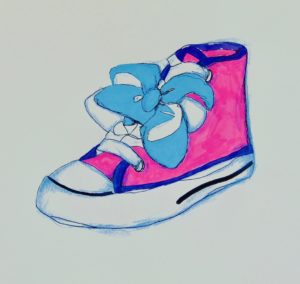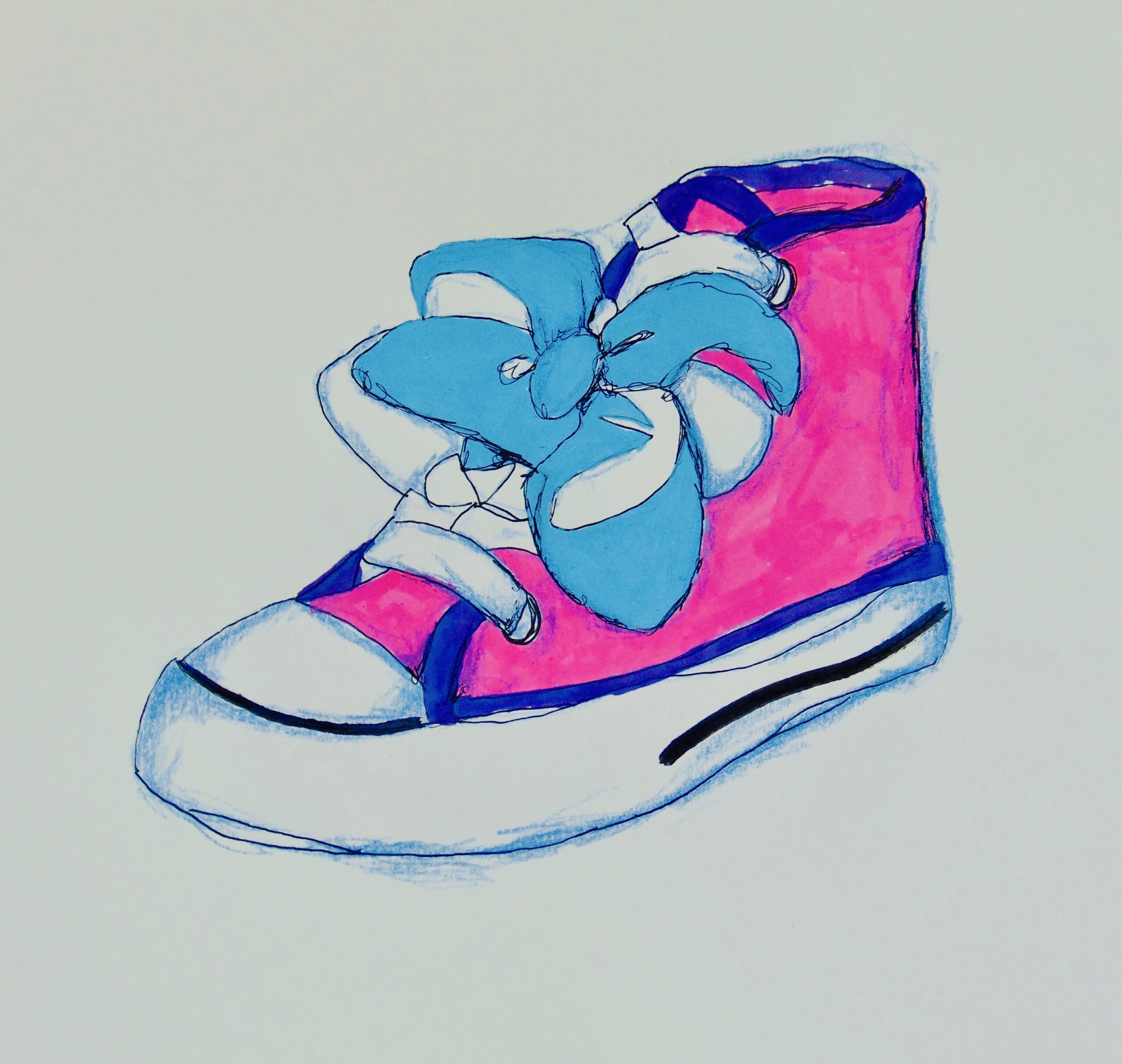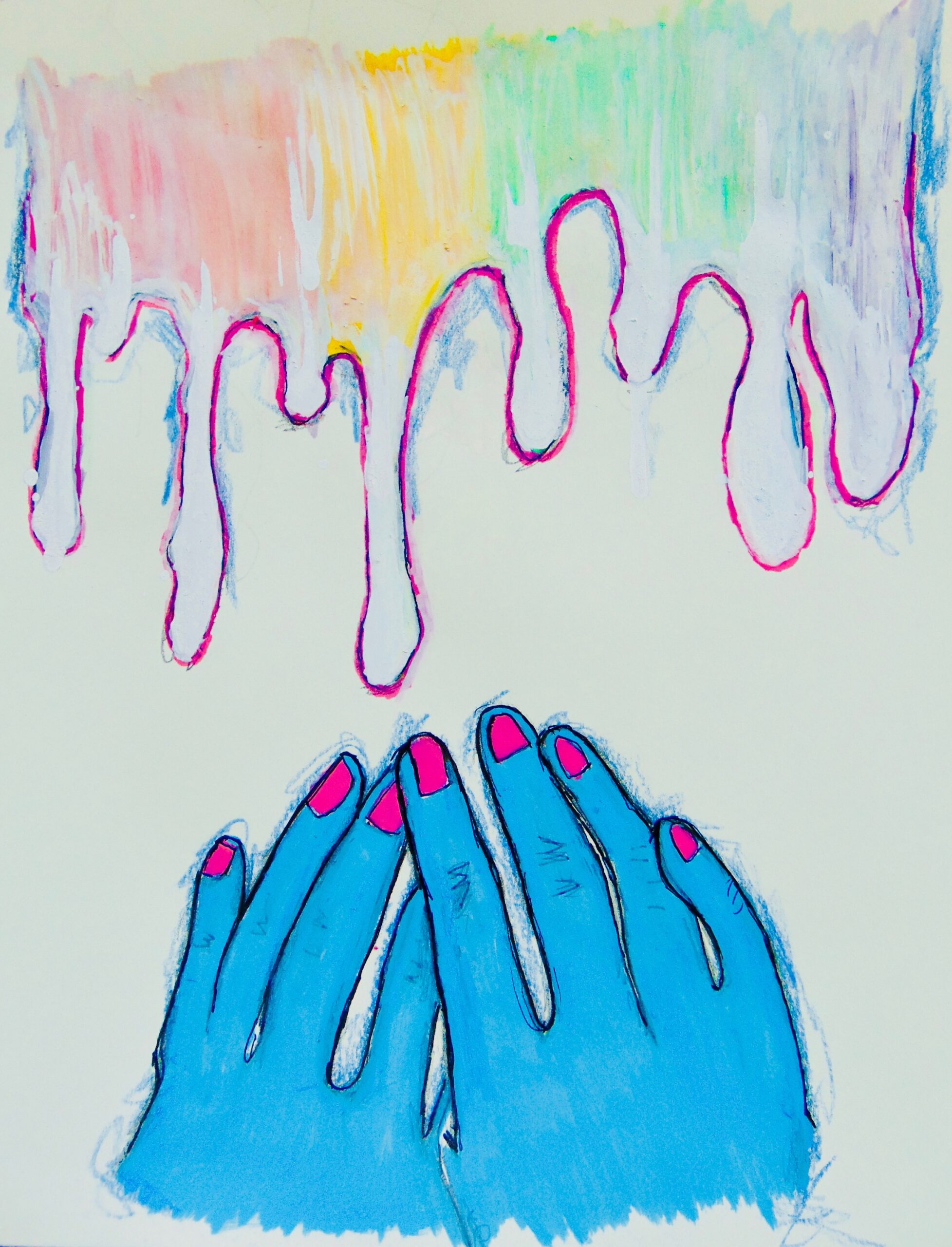
Lucien runs ahead of me when he sees the shoe section in Target. By the time I catch up, he’s found a plethora of shoes depicting the characters from Paw Patrol, his favorite show. The show features a boy and his team of rescue dogs. Lucien enjoys all of the characters, but he especially loves Skye, the girl pup, because she flies a helicopter and wears pink. Pink is Lucien’s favorite color. He points at a pair of Chase shoes. “Those, maybe,” he says. I find his size. When he sits down to try them on, he notices a pair of pink Skye shoes on the bottom shelf and gasps, “Oh! Those!”
At five years old, Lucien has only begun to understand the concept of gender and gender roles. He certainly doesn’t seem to recognize that inanimate objects or colors have any connection to gender. This is, primarily, because my husband, Bryan, and I have never reinforced those ideas. It hasn’t ever mattered to us that he loves pink, likes to play with dolls sometimes, often prefers the female characters in the shows he watches—Minnie over Mickey, Skye over Chase. I have always loved that he tells people he wants to be a mommy when he grows up. In fact, Bryan and I have, at times, actively shielded Lucien from being in situations where he might learn that he shouldn’t love the things he does simply because he’s a boy. We once declined a spot in a daycare when, during our initial visit, the provider saw him pick up a Barbie and felt the need to point out that the boy toys were on the other side of the room. Bryan and I thanked her for her time, grabbed Lucien, and left.
But even in a daycare with a more understanding provider, we can’t shield him from everything. In the essay “Becoming Members of Society: Learning the Social Meanings of Gender,” sociologist Aaron Devor writes,
As we move through our lives, society demands different gender performances from us and rewards, tolerates, or punishes us differently for conformity to, or digression from social norms.
Lucien began to receive punishment for such digressions when he entered toddlerhood. He was young enough that most days went by without incident, but every now and then he would come home upset, because, rather than pretending to go off to work, he wanted to do the mommy things with the dolls: feed them, rock them, dress them. The girls felt he was infringing on their play, and the boys didn’t understand him. He’d had toys taken from him, been told he wasn’t a “real boy,” and sometimes, other kids flat-out refused to play with him.
Around that same time, I started tricking him whenever we went shoe shopping. He almost always wanted the ones with princesses on them, because those shoes were pink and glittery. He couldn’t read numbers yet, so I’d pull out a couple of pairs that were too small and say, “Shoot, they don’t have your size.” As far as Lucien knew, for two years the shoes he liked never came in his size. I wanted to protect him from being taunted and teased. And, I was afraid that, no matter how I explained it, he would interpret what I said to mean there was something wrong with him for wanting those shoes. I also did it for myself: Tricking Lucien into getting socially safe shoes was easier for me than having to deal with the aftermath of a bad day at daycare.
But now, at five, he knows what size shoe he wears and he can read numbers. He gets on his knees, rummages through the boxes, and pulls out a pair of Skye shoes. Astonished, he says, “Mommy! They have my size!” The shoes fit. He wants them. I think about the ways in which he might be punished, especially now that he’s in school, surrounded by more kids than the small play group in daycare. Color has no real meaning other than what we place on it, and that meaning changes. Historically, pink was considered masculine. But, kids don’t know that. What they know is that pink signifies femininity, girly-ness. The connotation is “girl.”
Devor notes that children come to see themselves in terms they have learned from the people around them. The older Lucien gets, the more I’m learning how rigid and unforgiving those terms are. I don’t want Lucien to see himself in such rigid terms, or feel compelled to conform to them. I don’t want things like his preference for certain colors, cartoon characters, or toys complicated in ways they shouldn’t be. I realize he might change his mind about the shoes if I talk with him about the consequences he might face for wearing them, and I worry about contributing to that rigidity. What he might learn—from me, no less—is that the way he wants to express himself isn’t socially acceptable, that he needs to or should acquiesce to the way others see him, that he should perhaps allow others to impose their beliefs on his sense of self. Still, I want to protect him. At some point, he has to understand what other kids already do, and it starts to seem irresponsible and cruel to not warn him.
I decide to tell him.
“Hey Bubs, sit down with me,” I say. He sits on the floor next to me while admiring his pink-covered feet. “Those shoes are so cute, and we can get them, if you want—”
“I do,” he says, interrupting me.
“Okay, but I have to tell you that if we do, then some people at school might not be nice to you.”
“Why?”
“Well, because a lot of people think pink is only for girls. When they see a boy, like you, wearing pink, it makes them uncomfortable. And, sometimes when people get uncomfortable they say or do mean things.”
“That’s silly,” he says, “Pink is for everyone.”
“It is silly. I think you look awesome in those shoes. If you want them I think it’s great, and daddy thinks it’s great, because you are great. I just wanted you to know that not everyone thinks like we do.”
He stares at the floor for a moment and then asks, “Will they be mean to me if I get the Chase shoes?”
“No,” I say.
Contemplating, he shifts his gaze from the floor, to his feet, to the blue Chase shoes, and, finally to me. “I’ll get the Chase ones.”
As he changes back into his old shoes, I tell him, again, that he can get the Skye shoes. I try to explain that I didn’t intend for him to change his mind. I just wanted him to know. But, he insists on the Chase shoes.
When we get to the register, there is no jumping up and down, no excited banter in which he tells the cashier all about his new purchase like he normally does. After I pay, he hugs me, smiles, and says, “Thank you, Mommy. It is cool that these shoes light up, right?”
“Super cool,” I say.
We walk out to the car, hand-in-hand, neither of us entirely sure about the decisions we just made.
***
Rumpus original art by Alison Stine.







